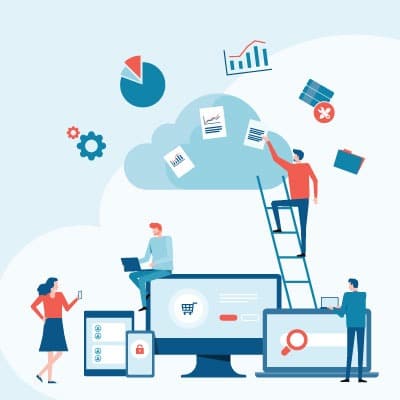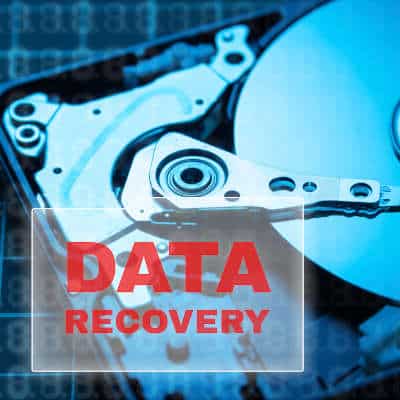How are Cybercriminals Using Coronavirus? “You can sit in a room and create anything you want on a laptop. That’s why the real con men are gone.”– Frank Abagnale Reformed con man and FBI consultant Frank Abagnale is right, as the cybercrimes shaped around the coronavirus have proven. Due to the deep anxiety and trepidation that the media coverage of COVID-19 has encouraged, cybercriminals have been handed an opportunity to take advantage of the panicked populace through phishing attempts… an opportunity they have embraced since the end of January. These themed attacks have been directed toward a variety of targets. For example: Healthcare providers have been targeted by phishing attacks that deliver keylogging malware, meant to look like emails from local hospitals or the World Health Organization. “Informational” emails referencing coronavirus have enabled hackers to introduce ransomware to the populace. Members of the supply chain have seen coronavirus emails that install information-extracting malware through malicious Microsoft Word documents. Of course, this kind of activity has been going on for far longer than the Internet has been around… it’s just that the Internet makes these attacks much more efficient and effective. How this Complicates Things Unfortunately, the latest application of these attacks have proven effective. Much of this is likely due to the fact that they are leveraging a very visible and nerve-wracking event, which helps to boost the interest of a target. This same tactic is the reason that so many phishing attacks are launched right around tax time, and why fraudulent messages were shared via SMS claiming that the recipients needed to register for the draft… for a fee. Whatever the approach, the tactics have remained the same: scare the recipient enough that they don’t consider that the message may be fraudulent, and give them a perceived “out” if they turn over their information. Adding to the complexity, the situation with COVID-19 is just different enough from other events that cybercriminals typically take advantage of, for it to be uniquely dangerous. For instance, many of the other disasters that a cybercriminal will use to their advantage are over in a relatively short time frame. In comparison, COVID-19 has already spent weeks dominating the headlines, with no way to tell how many more weeks (or months) are yet to come. In addition to this, coronavirus is largely unprecedented, unlike the foundation of many other phishing attacks (such as major sporting events and the like). This means that there is no real resource that is known to be trusted for people to turn to. For weather events, the National Weather Service and FEMA fill that role… no such resource is as commonly trusted for coronavirus. What Can Be Done In most cases, resisting these efforts will require a combination of basic cybersecurity measures and–perhaps more critically–user awareness and education. While your protections will ideally block the majority of phishing attacks and malicious messages, you need to be sure that your employees are aware of how such attacks should be handled: Train effectively – Rather than taking up half of one day on a dull and repetitive training seminar, split your training efforts into shorter pieces, focusing on assorted aspects of the threat at hand. Give your team the knowledge they need to recognize phishing attacks and understand the importance of mitigating
Let’s pretend that all data is represented by books in a library, which itself represents the database. Now, consider what a library would be like without the Dewey Decimal System. All the books would be stuffed into the shelves haphazardly, no rhyme or reason to them at all. It would be practically impossible to locate any of the information you were trying to find. The Dewey Decimal system serves the same purpose in the library as the database management system (DBMS) does for your database. What Does the DBMS Actually Do? True to its name, the database management system enables you to manage your database. More specifically, it assists you in keeping your data organized and secure, while also helping you keep track of the activity taking place in your database. One of the biggest advantages of a DBMS is the fact that it gives you so much control over your data, while also adding convenience. For instance: A DBMS allows you to restrict access to data that an end user has. Users have a simpler time finding the data they need. It eliminates the need to restructure data to use different programs. Administration procedures can be unified. A DBMS makes data processing more economical. Data inconsistencies between file systems are eliminated. A DBMS allows for simultaneous data access between multiple users. In short, a database management system makes your users’ jobs simpler to carry out, without sacrificing the security of, or control over, your data. SRS Networks can help you implement the organizational tools you need to remain productive. To discuss your needs with one of our professionals, give us a call at (831) 758-3636.
Here are some of the situations that businesses can benefit from proper data recovery maintenance: “…Oops.” At the end of the day, the most prolific threat to your data is your staff, the people you’ve hired to put all that data to use, including the person who looks back when you look in a mirror. I know, what a plot twist. However, it doesn’t make it any less true. Human error is one of the most common reasons that a company experiences data loss on any scale, mainly because there are so many ways for someone to make a mistake. Maybe someone deletes something accidentally, or takes the only copy of something offsite only for it to be lost or damaged. Therefore, it is crucial that you educate your users on proper practices for handling data, in addition to maintaining a comprehensive backup of your data to draw from if the need should arise. “In today’s weather…” Natural disasters can certainly live up to their name where your business’ data is concerned. Regardless of what the forecast says, your on-site infrastructure and any data it holds can be put at risk if a storm is severe enough. Taking this into consideration, any good provider will make sure that your data isn’t only saved in one location. Look at it this way… what good is a data backup, if that backup is wiped out by the same disaster that made it necessary in the first place? This is precisely why we always recommend that at least one copy of your data is preserved safely off-site. “Wait, my computer isn’t working right…” There are plenty of ways that an issue with a device itself can lead to data loss. Viruses can infect critical systems and take up the resources you need to be productive (and to save your data), drives can fail at the worst times, and the data stored on your system can be corrupted. If this is the case, keeping a backup can help save data that would likely have been lost without the backup. Finally, many small businesses assume that their size protects them from the interest of hackers. Unfortunately, they assume wrong. With many attacks now automated, cybercrime has become far easier to perpetrate. Threats like ransomware and other attack vectors can often require businesses to wipe their infrastructure to remove the infection. In these cases, a backup can prevent these actions from being a “mutually assured destruction” kind of strategy. Data recovery comes in handy in situations of any size and importance. SRS Networks can help you implement the solutions necessary for you to maintain a proper data recovery strategy. Learn more by giving us a call at (831) 758-3636.
Regardless of what your business does, or how it does it, the data your business has is valuable. After all, a lot has gone into its creation… just consider the combined effort that your sales and marketing team, your human resources department, and the rest of your staff rely on and generate during their respective operations. Add to that all the data you’ve collected from your clients and customers. Now imagine the repercussions of losing any of that data. So Yes, Data is a Big Deal… … and as such, it needs to be protected. While antivirus, firewalls, intrusion detection, and all the other security tools we always recommend are a necessary part of this, a real disaster will require more. It will require a comprehensive backup and disaster recovery strategy to be fully planned and implemented. Of course, a “disaster” can come in many forms, like: Human error Malware attack Sabotage and theft Hardware malfunction Power surges Software corruption So, with all of the different ways that your business could experience disaster, it is imperative that you create a business continuity strategy that, by incorporating a backup and recovery plan, prepares you to sustain your operations through even the worst possible scenarios. In theory, a business has options to consider when making these preparations. Technically speaking, backup solutions like tape and removable hard drives could work for you, as could a cloud backup. At the end of the day, it all comes down to how your data is handled, and how you would need to scale your backup in the future. Having said that, we typically recommend a BDR solution. This is because the BDR covers both your backup and disaster recovery needs. As a network-attached storage device, it is configured to incrementally backup files, preventing the large chunks of data created between backups from being lost. The BDR can also act as a temporary server, should your original experience malfunctions. To provide the needed redundancy, the BDR will also save a copy of your backup in an offsite data center. As a result, a disaster that wipes your business’ data as well as the BDR still won’t eliminate your data entirely. To learn more about the BDR, reach out to SRS Networks by calling (831) 758-3636.
What Divides IT and OT? Nowadays, the difference between these two categories has become slim, largely thanks to the Internet of Things. IT is the technology used to manage any of the business’ collected data, while OT is the technology that facilitates the business’ operability. As the two have merged, it has become critical to protect both from the threats to businesses out there. Now, IT and OT work in tandem to keep a business effective and operational, which can put decision makers in a tough spot. With both sides needing protection, costs have swelled and now their technology demands more of their focus. Let’s go over a few reasons why: Targeted Attacks While the IoT can be increasingly useful as innovation moves technology forward, it can be equally problematic to attach additional devices to your IT network. As the typical IT department often doesn’t think of OT systems when considering your endpoints, they are left vulnerable to cyberattacks directed towards them—including ransomware attacks, man-in-the-middle attacks, and others. To avoid downtime in your OT, you need to include protections for these technologies in your security strategy. Complex Compliance Attacks also aren’t the only thing that modern businesses need to worry about. Various government bodies, industry authorities, and local regulations have set constraints and standards for businesses that fall under certain industries must follow. Of course, this leads to expensive equipment maintenance and other challenges for businesses to deal with. To help alleviate these costs, many IT solutions are now used to automate tasks, but in doing so, sometimes exposing their OT to greater risk. Growing Security Issues The Internet of Things is actively being innovated upon, which businesses see as an opportunity to improve some aspect of their operations. Unfortunately, many don’t consider the fact that each device added to their processes adds another potential access point for a threat. How to Better Protect Your IT and OT We have assembled a brief list of activities that will help you ready yourself against the risks that the merging of IT and OT is causing. If you want or need assistance with any of these considerations, don’t hesitate to reach out to SRS Networks: Hardware inventory controls Software inventory controls Ongoing vulnerability management Measured use of admin privileges Secure hardware and software configurations Audit analysis and maintenance Our team can help you keep your business secure, while still boosting its operational effectiveness. To learn more, give us a call at (831) 758-3636.
These methods vary wildly but can effectively be split into a few overarching categories: instruction-based, active training, experience-based, and technological. Instruction-Based This is the approach to learning that most are most familiar with, as modern education systems largely rely on it. With the help of visual aids, an instructor presents a lesson to a large group in a classroom setting. Think conferences, seminars, lectures, or presentations, and you’ll have the right idea. This form of training is very efficient to deliver but can be ineffective for the same reasons that make it so efficient. Due to the size of the group, a lot of people can absorb the lesson at once, but there is the chance that the impersonal nature of such a lesson won’t allow the information to be retained… which means that the person delivering the message has to work to keep the attention of the group. If the right energy level can be maintained in proportion to the size of the group, this can be an effective way to teach fundamentals. Active Training Active training is very similar to instruction-based, with one key difference: active training relies quite a lot more on the participation of the person being trained. As a result, active training sessions may have a loose outline of materials to cover, but the lesson relies on the active (hence the name) participation of the person being trained. Harvard University has conducted studies that have shown that active learning techniques result in greater outcomes despite participants feeling as though more traditional teaching methods worked better. A few examples of active training scenarios are workshops, where a relative expert guides the class through a topic, and brainstorming sessions, where participants must contribute thoughts and ideas to overcome a challenge. This version of training can present quite a few benefits, like increased engagement and collaboration between coworkers. However, some people may be reluctant to work in a group, which could potentially limit how effective the lesson really is. Therefore, an instructor’s job also involves monitoring these groups to ensure that everyone is on task and participating. Experience-Based Training This approach is basically the practical application of “practice makes perfect,” as learners are exposed to the situation that the training applies to during the training itself. Because they are observing and participating in the process to learn it, this is a very effective way to teach an employee a process they need to follow and develop the skills in context. This approach can often be fast-paced and high pressure, so it often helps to give trainees additional resources to prepare themselves beforehand. This kind of training can happen through simulated scenarios and role-playing but is most seen in someone shadowing an assigned mentor. Mentorship has often been perceived as more effective amongst existing employees who will soon be elevated to a leadership position, while on-the-job training is most effective with new hires. As a result, different kinds of experiential training could – and perhaps should – be employed at different levels within your organization. Technological Training Of course, we must discuss how technology provides opportunities to train your employees, and how its benefits (like accessibility, efficiency, and progress tracking) can make the entire process simpler for you to manage. The key ingredient that technological training offers is the
Uptime and Capacity Optimization An efficient business doesn’t have to deal with a lot of downtime. This is made possible by reliable and well-maintained systems. Technology doesn’t maintain itself, after all, and it takes a dedicated strategy to keep technology updated, patched, and maintained. This strategy is typically to update systems when organizational productivity slows. With the help of a managed IT service provider, you don’t have to schedule these fixes. The MSP has powerful remote monitoring and management software that allows professional technicians to keep an eye on your network, your infrastructure, and your data storage systems to ensure that all are functioning optimally. Additionally, using innovative automation technologies, we are able to better patch, update, and protect your network than any other method of IT support. An MSP’s service is a fraction of the cost of a comparable solution: paying multiple IT technicians to monitor and maintain your business’ network and infrastructure. The value of an MSP is clear. Your business will see more uptime, and less overall IT-related issues, while also having access to useful methods of IT support. Business Management Optimization The small and medium-sized business owner has a lot of responsibilities. Adding the health of a company’s IT to that list may not be ideal. Running a business means making tough decisions, but if you could move some of them off of your plate, wouldn’t it make you more effective at dealing with your other responsibilities? Definitely. Managed IT Services makes this possible. Besides freeing up capital that typically would be allocated to payroll, an MSP puts you in position to focus your efforts on other endeavors. Your IT, therefore, will be a strength, as it will have trained professionals focusing on it, allowing you to focus on everything else. IT Budget Optimization Speaking of shifting capital. Managed IT services, even with every machine your business has covered by a managed services agreement, is a fraction of the cost of hiring the corresponding number of IT professionals. Having IT technicians that live and breathe IT working for you is advantageous, but having them working under contract for a small percentage of the cost you would expect, is a positive development for any business. Furthermore, an MSP can help you direct the saved capital to make your business better. When people have years of experience dealing with business-centric information technology issues, they can help you design and implement the technology that will help your business make gains in efficiency and productivity. Security and Compliance Optimization Sure, managed services bring a lot of value to your organization. Nowhere is this more evident in combating cybercrime and maintaining organizational compliance. With the ever-expanding knowledge base in cybersecurity that an MSP’s technicians have, your business will see some major benefits. Firstly, you are sure to get the most comprehensive and dedicated security consulting. Secondly, an MSP can help you implement a training regimen that can do wonders for keeping your business’ IT secure. Finally, an MSP can present you with innovative tools to keep your data, network, and infrastructure safe. As far as compliance goes, the more secure your IT resources, the better your organization will be at operating up to compliance standards. Since compliance isn’t all about keeping your information secure, our expert consultants can help your organization
Office 365 Mobile Office 365 is a cloud-hosted version of Microsoft’s award-winning Office productivity suite. This provides users both a cloud version and a downloadable version of the software for multiple devices. Realizing that the future of the product is likely going to have to embrace mobility, Microsoft has been aggressively developing the software for mobile devices. For years, you could get Word, Excel, PowerPoint, OneNote, OneDrive and Outlook through dedicated apps on your smartphone or tablet; and, they work well, but it could often be a cumbersome experience to receive files, find them, and access them quickly. This is no longer the case. In response to complaints about a lack of concrete file management, Microsoft has built the Office Mobile app for Android and iOS. This new app automatically gives the users a list of any Microsoft Office document, spreadsheet, presentation, or note. Better yet, once you tap on a file, it opens it in the corresponding application on your phone. This not only allows you to have quicker access to your resources, it also provides the following options: Transfer Files – Users can share files between their computers and their phones. Share Nearby – Using the app (and NFC), you can transfer and receive files by just being in the proximity of another user that is using the app. Convert Text in Images – Users can extract text from a picture or extract a table from a picture into a spreadsheet. More with PDFs – The Office Mobile app allows users to do much more with PDF files. They can convert documents into PDFs, sign a PDF, and use pictures to build a PDF in multiple ways. Scan a QR Code – You can use the Office Mobile app to scan a QR code and save it into OneNote. The Office Mobile app also gives users options to create quick notes, use Microsoft Lens to capture information, or create new Office documents of all types. The Office Mobile app is available on the Apple App Store and Google Play Store, and is free to download. If you already have a logged in Microsoft Office 365 account on your phone, the Office Mobile app will automatically propagate with your available information. If you don’t already have Microsoft Office 365, and would like to talk to someone about gaining productivity and efficiency with some of the best productivity software on the market, give SRS Networks a call at (831) 758-3636 today.
Optimize Your Apps How many applications do you currently have installed on your phone? Of those, how many do you actually use? Chances are, there are a lot of apps that no longer serve you any purpose that are just sitting on your phone, cluttering your application drawer and drawing attention away from the tools you need. Our recommendation here is twofold: first, do some spring cleaning and delete some of the applications that you just don’t use any longer. They aren’t doing you any good, anyway, and they are only taking up valuable storage space on your device. Second, take the time to organize your device, arranging apps on different screens. This will help you to stay focused on the task and hand, without your social media accounts or the silly mobile game you downloaded drawing you away – there is nothing wrong with having them, as long as they don’t impact your work. Disable Certain Notifications Speaking of your social media (and of being drawn away from your responsibilities, for that matter), there is no need that you need to know that one guy you met at a mutual friend’s party has liked your status during work hours. The same goes for the silly mobile games. Who cares that your energy has recharged and that “your kingdom needs you?” You have real work to do! The notifications that these applications send us are meant to be disruptive, to put the task at hand to the side as you follow the application where it takes you. Turning off notifications takes a lot of power away from distracting applications simply by preventing temptation. Disconnect Depending on the task at hand, it may even be a good idea to disconnect your phone for a few moments’ peace. Of course, if you’re expecting important phone calls to be coming in, this is a bad strategy to try out. Otherwise, kill your phone’s Internet and wireless connections, and consider putting on some headphones to make your focused attention clear to anyone around you. Keep It Updated Of course, for your mobile device to be able to work productively, its software needs to be vetted and maintained. Make sure you actively apply updates and patches over time to ensure that your device remains in good working order. Your IT resource will be a useful ally to lean on where this is concerned. What has your experience been with smartphones in the workplace? Share your thoughts in the comments!
Your Business’ IT Support If IT support plays such a big role on the success of your business, it stands to reason that you would want to establish how to determine what type of IT support will have the most significant impact on your business’ ability to create revenue. The first consideration that needs to be addressed is ensuring that your IT support can help you maximize your company’s uptime; and, that the support results in a net positive ROI. Minimize the Total Cost of Ownership There is a metric in business called Total Cost of Ownership (TCO). This is where a business determines how much it actually costs to own a product. For the average business, a server is the most important and expensive device, but once you factor in the expense in migrating files, regular and irregular maintenance, the cost of utilities that power the device, you may be adding a large percentage to the total. Minimizing this through viable output and consistently good performance can improve your ROI and limit your TCO. We’re not suggesting that you should go into a total TCO analysis of all of your computing resources. That would take a lot of time that you just don’t have. Our suggestion is, however, to keep in mind that proactive management carried out by an outsourced IT provider will work to maximize the value you will see from that device. This is because the more uptime your systems have, the more they can be used for revenue-creating possibilities. Additionally, if you want to go beyond outsourcing your IT support, you can utilize cloud computing platforms that remove your need for IT support completely. Since these platforms have dedicated IT professionals managing their own hardware, the price of which is baked right into the product, you won’t see additional costs from utilizing utility computing in the cloud. Boost to Productivity and ROI We’ve already presented how outsourcing your IT support can work to save you considerable money due to its proactive nature, but we should mention that you do have options. You can choose to do business with an outsourced IT provider, who admittedly already does business will other companies in the same fashion. With new automation that is available, not much is missed, but it stands to reason that if you are going with an outsourced provider that you may be concerned that your IT isn’t always being valued. For companies that don’t want to outsource, there are two options, you can rely on a break/fix provider that fixes technology as it breaks; or, you can work to hire a dedicated IT staff for your business. Regardless of what you choose, to keep productivity high, your business’ technology has to be available and functioning as intended. To maximize the return you see on your investment, you have to have systems up and running as intended, but also have to be financially conscious. Managed IT services make this possible. If you would like more information about IT support and services, contact the professional IT experts at SRS Networks today at (831) 758-3636.










